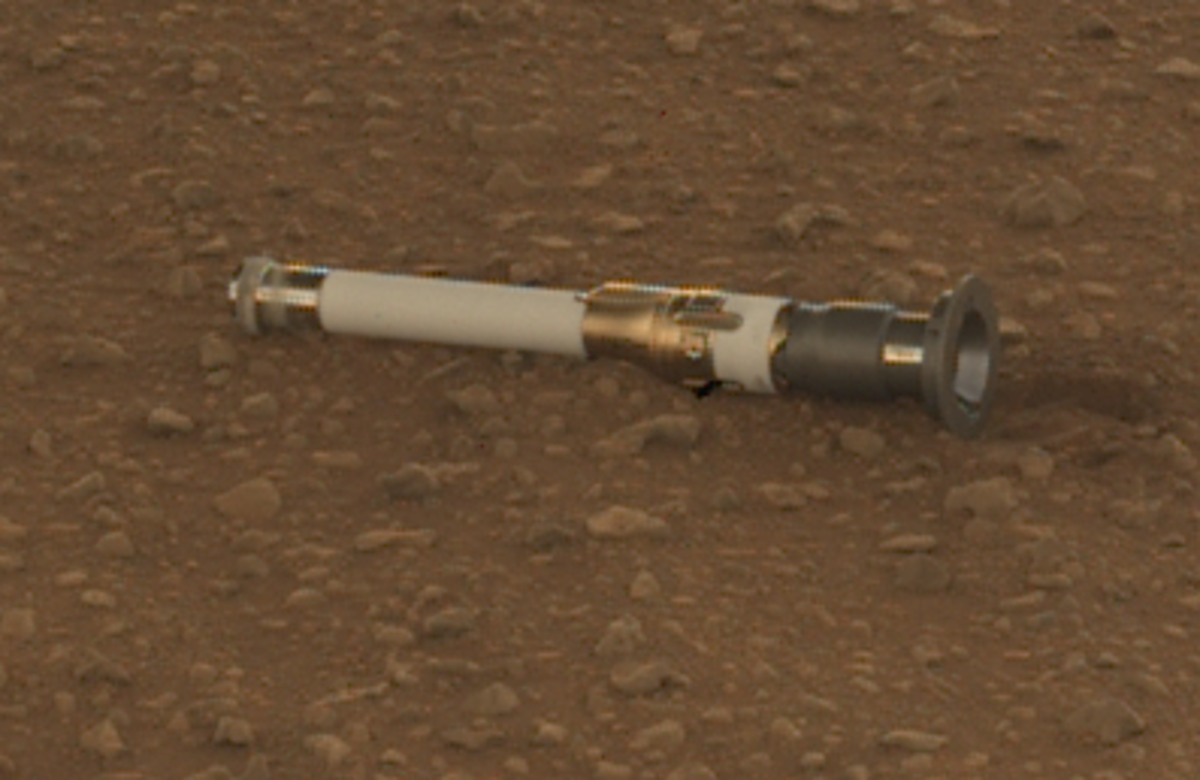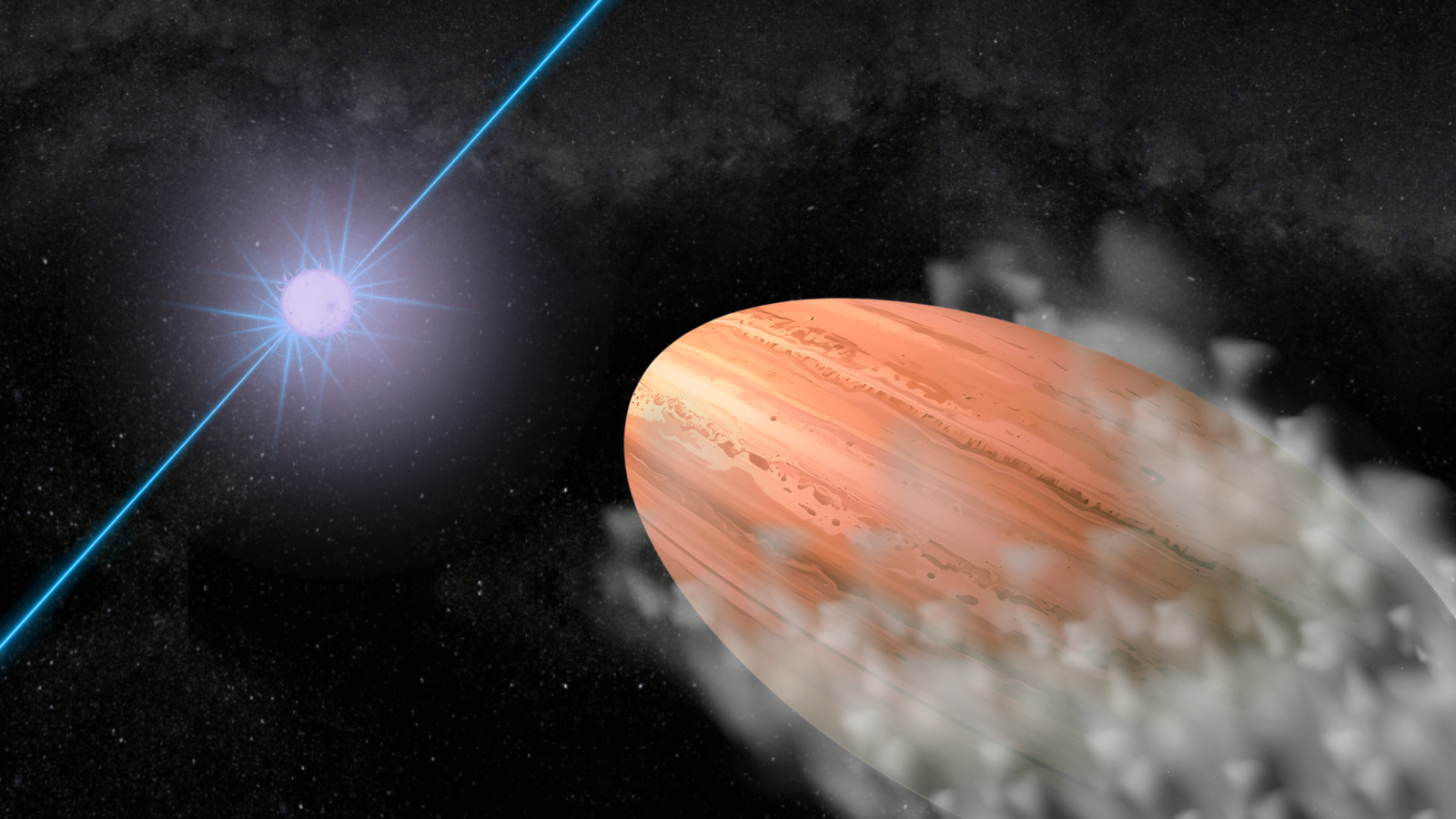Mars dust won't bury Perseverance rover's rock sample tubes on Martian surface
'My team's not worried' about dust or wind disturbing the lightsaber-shaped cache tubes, NASA's Perseverance mission wrote on Twitter.

Neither dust nor wind nor dark of night will disturb new caches of precious Mars samples on the Red Planet.
This month, NASA's Perseverance rover has been dropping lightsaber-shaped caches of material on the surface of Mars to lie in wait as backup for a future sample-return mission. Perseverance collects two samples at each location and carries one set with it. If the rover can't bear the samples in its belly to a waiting spacecraft itself, two fetch helicopters will tote the backup surface tubes to the return rocket instead in the 2030s.
The epic NASA-European joint mission will allow researchers on Earth to scrutinize the tubed samples for signatures of life. Given the fetch mission isn't expected to land until the 2030s, however, officials at NASA's Jet Propulsion Laboratory said on Twitter that they've heard public concerns about wind or dust hurting the tubes, or making the caches difficult to retrieve.
"My team's not worried," the official Perseverance account tweeted Dec. 23, along with a series of evidence showing why the tubes won't travel far — and how NASA is tracking their deposit locations as the ultimate backup.
Related: 12 amazing photos from the Perseverance rover's 1st year on Mars
Unlike the fictional, powerful wind storm depicted at the start of "The Martian" (2015), the Red Planet has gentle gusts. Due to its thin atmosphere at only one-hundredth the pressure of Earth's at sea level, Mars wind largely is confined to picking up fine sand grains.
"Winds around here can pick up *speed,* but they don't pick up a lot of *stuff.* Think fast, but not strong," the Perseverance account tweeted. In practical terms, winds are not the threat for nuclear-powered missions like Perseverance. The NASA Curiosity rover, for example, is still running after 10 Earth years on Mars with only a thin layer of dust covering the machinery, the account noted.
Breaking space news, the latest updates on rocket launches, skywatching events and more!
That said, dust coverage on solar panels (like NASA's recently concluded InSight Mars lander mission) can pose a long-term threat to exploration, as they slowly choke off the supply to solar power — absent a lucky gust of wind. "It's spelled the eventual end of more than one solar-powered explorer," the Twitter thread noted of the dust.
Related: Can we save Mars robots from death by dust?
What about something smaller, sitting low on the surface? See this ribbon cable leading to @NASAInSight’s seismometer? After four years: a thin coat of dust, but easy to spot. (The pile of dirt you see over part of it is only there because InSight purposely put it there.) pic.twitter.com/UdpHVY18eADecember 23, 2022
Even for tubes that lie low on the surface, NASA expects they will be "easy to spot" based on examples like older footage from InSight. After four Earth years lying on the Red Planet ground, cables from InSight were admittedly dusty, but still recognizable.
"Not only do we expect the sample tubes not to be covered up," the Perseverance account tweeted alongside a map, "but I'm also very carefully documenting exactly where I put them down. So going back to them again later shouldn’t be an issue."
The backup mission is currently expected to arrive in nine years, or around 2031. Launch opportunities between Earth and Mars arise roughly every two years, giving several chances to send a mission out there before 2040 — assuming that funding for the sample return mission holds and technology development proceeds to plan.
Elizabeth Howell is the co-author of "Why Am I Taller?" (ECW Press, 2022; with Canadian astronaut Dave Williams), a book about space medicine. Follow her on Twitter @howellspace. Follow us on Twitter @Spacedotcom or Facebook.

Elizabeth Howell (she/her), Ph.D., was a staff writer in the spaceflight channel between 2022 and 2024 specializing in Canadian space news. She was contributing writer for Space.com for 10 years from 2012 to 2024. Elizabeth's reporting includes multiple exclusives with the White House, leading world coverage about a lost-and-found space tomato on the International Space Station, witnessing five human spaceflight launches on two continents, flying parabolic, working inside a spacesuit, and participating in a simulated Mars mission. Her latest book, "Why Am I Taller?" (ECW Press, 2022) is co-written with astronaut Dave Williams.
